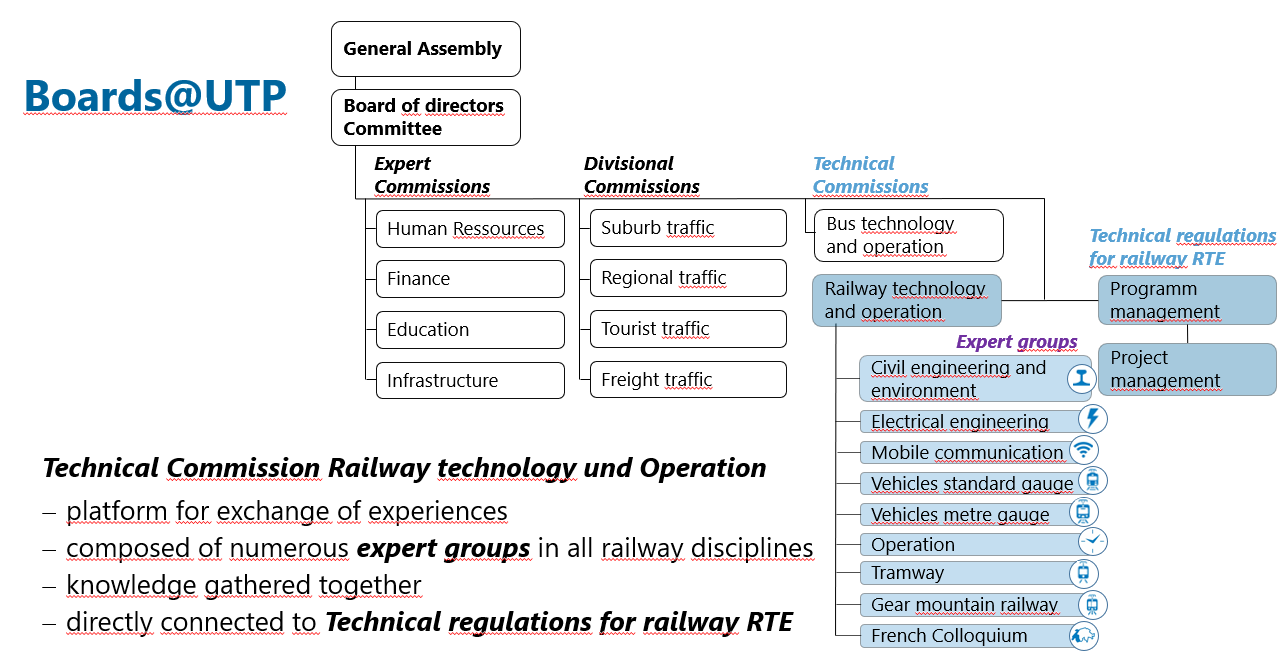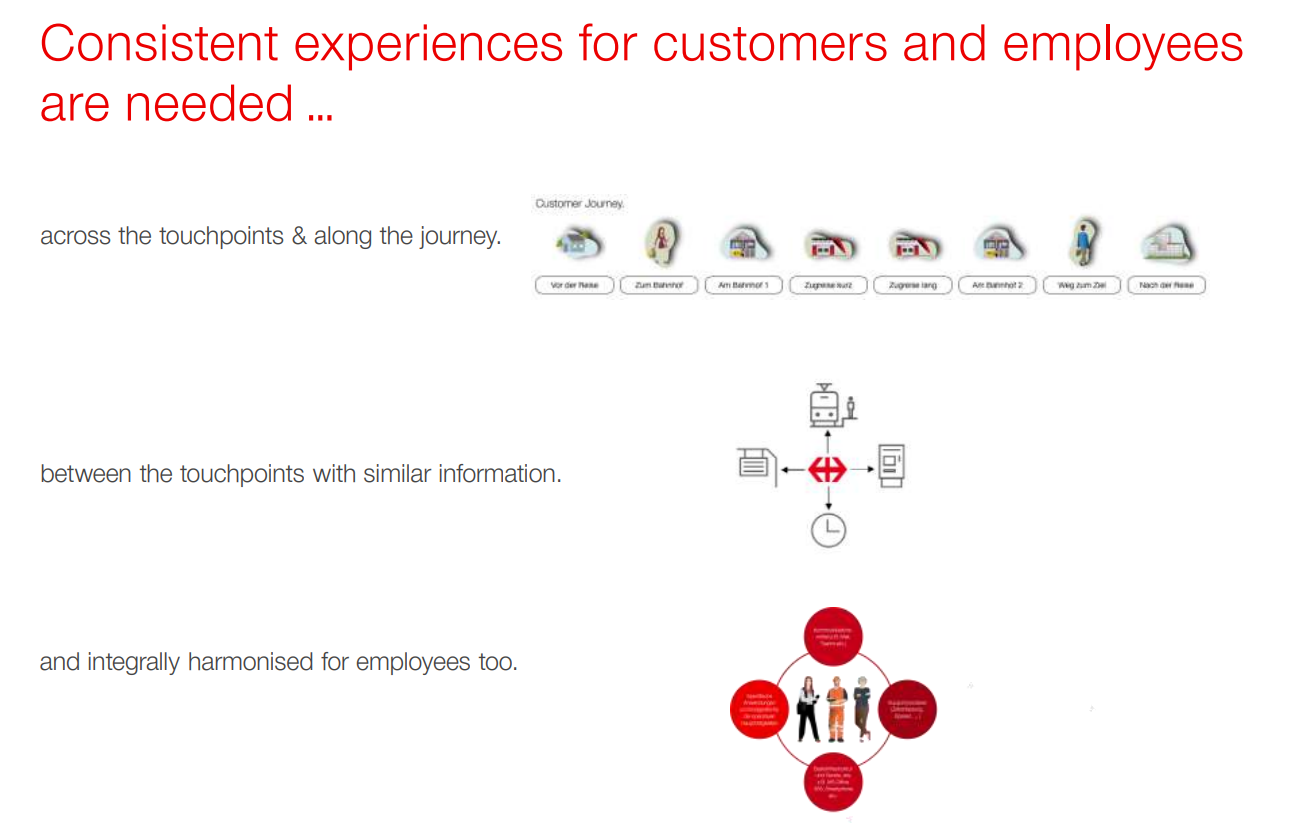A Seamless Customer Experience and a Cooperation Based Model of Public Transport: Summary of Day 2 of the SwissCal Conference
Day two of the SwissCal Conference took place on February 8, 2022, with over eighty policymakers in attendance. This post contains a full summary - however, some of the main takeaways included:
The association of Swiss public transit operators (VOV/UTP) holds a unique role within the Swiss public transit system, with many of its goals and requirements set out by the Federal government. The industry association collaborates across its many operators through a number of specialized commissions to develop standards and undertake joint programs such as workforce development and training.
SBB, the national rail agency, provides leadership at a nation-wide scale in creating a unified customer experience, investing heavily in internal specialists that oversee a range of programs focused on collecting user feedback, deploying new technologies, and inter-agency collaboration.
Despite the federal framework for coordination, local transit agency operators have an important role to play in spearheading local coordination. Perseverance and commitment to serving the needs of riders is essential to overcoming complex jurisdictional challenges - which may take many years - but which are viewed ultimately as worthwhile and an important component to gradual improvement of the system. In the case of Geneva, perseverance despite the existence of international boundaries led to the creation of an international rail line and a common fare pass between France and Switzerland.
--
Day two of the conference centered around understanding the different roles public transport providers play in delivering seamless transit and fares. Bernhard Adamek, Vice Director at VOV/UTP, presented on the National Association of Swiss Transit Operators and how as an industry association for transport companies, it represents the diverse concerns and interests of these companies. Daniel Boos, Product Owner in User Experience and Eva Krueger, Customer Experience and Insights at SBB, discussed the role of the national and regional rail provider in the transit user experience. Finally, Anne Hornung-Soukup, Chair of the Board of Directors at Transports Public Genevois (TPG), talked about the role of public sector decision-makers and local and regional authorities. Over eighty people attended the second session.
A Cooperation Based Model of Public Transport
The National Association of Public Transport Operators (UTP) is an umbrella organization of public transport companies in Switzerland. It includes 130 “full” members who represent a variety of Swiss transit operators such as railway companies, bus companies, and funicular/aerial railway companies and 180 “friendly” members which include industrial and business enterprises, associations, and educational institutes.
Adamek described in greater detail the legislative framework established by the Federal Office of Transport (FOT) that ensures a cooperation-based model of public transport in Switzerland. FOT licenses transport operators and outlines requirements operators must meet, including, for example, joint publication of timetables, providing standardized information to customers, participating in the direct service, or “one journey, one ticket” system, and engaging in competition that does not put existing transport companies at risk of being in economically disadvantageous conditions.
There are many transport operators in different geographical and legal contexts who must follow the same standards established by the confederation and the cantons (roughly analogous to “counties” in the US). Some of the rationale at UTP behind the pooling of interests includes the promotion of best practices in customer-friendly public transport solutions and the standardization of technical regulations for railway companies.
Essentially, the federal government gives directions about desired outcomes of the transit network, and it’s the industry sector itself that works on how these technical regulations should be implemented on a daily basis.
Another role that UTP plays is in leading workforce development and training for the public transit sector in Switzerland, working in partnership with the Swiss government. The Swiss educational system employs a dual track approach to learning. Workforce development entails on-the-job training (apprenticeships) and vocational school to learn theory. UTP is the recognized organization within public transport for all educational and professional development in the sector. Along with members in the educational commission, they come together to determine content for this learning. They also collaborate with authorities and other stakeholders, including schools.
By contrast, in the Bay Area - and more broadly in California - training and workforce development for the public transit sector are done on an agency-by-agency basis. Especially in recent years, many public transit agencies have had difficulty recruiting and retaining skilled workers to work in the transport sector, and have identified workforce development as critical to the future of transit in the Bay Area. This Swiss system of cooperative workforce development, enabled by partnership between the industry association and the federal government, appears to be an important model for the Bay Area to study further.
A Seamless Customer Experience
Eva Krueger and Daniel Boos of SBB, the national rail provider, presented to the conference attendees about how the agency oversees a unified customer experience across the country. There are many places where Swiss transport users can get transit information. One place where they can get information is through mobile apps. Mobile apps help with ticketing, include timetables, provide real-time information, and recommendations if a train or bus is running late. They look simple, but involve a lot of coordination and data standardization.
One aspect that is key to the customer experience is the positioning of transit-related information. On the tram, users get display information from the tram operator that shows what the next stops are, but they also get information on different connections (demonstrated on the right-hand side of the image to the right). At larger train stations, there is usually large signage (shown in the middle of the image) that has current track times and information if there is a delay or change. It also displays information if there is a disturbance somewhere, and what riders can do next.
Kreuger and Boos shared with conference participants images and videos that showed how a rider experiences seamless transit information across the user journey. When a rider is on a train platform, they can see information on where first and second class cars are, nearby restaurants, when the next train is running, and other information. Additionally, users can see train occupancy information, so they can plan their trips better.
SBB provides a variety of additional services to improve the customer experience, coordinating with external parties. For example, they work with ski regions to combine ski tickets with train tickets, so customers only buy a single ticket. Users can even load their ski pass onto their SwissPass. SBB also works with providers to combine different event tickets with train tickets. SBB even provides luggage service, picking up luggage from a customer’s starting location and bringing it to their destination.
SBB is the largest rail provider in Switzerland. They have their own customer service department, but as part of the Swiss method of System Leadership, they provide some customer service support to other operators as well. They work to answer questions customers may have, or bring them to the right place to have their questions answered. Customer feedback is another key part of the customer experience; SBB provides clear opportunities for riders to express praise or complaints and also provide feedback on how to improve the system.
With its significant scale and scope as the national rail provider, SBB is able to invest heavily in innovation and best practices to improve customer experience. Boos and Krueger described examples of how SBB carries this out.
SBB employs these values to the customer experience. According to the organization, to ensure a seamless customer experience, transit providers should 1) invest in a customer centric culture and customer experience competencies, 2) collaborate across divisions and companies with a vision about the seamless experience, and 3) orchestrate seamlessness across channels and touch points.
SBB fosters collaboration among its own expert community. Every three months they convene with a larger community, utilizing an agile approach to think about how they can work together to advance a certain topic.
SBB has test clients who go out and test the trains. They evaluate how clean they are and if they meet the quality standards that are required for government reporting. They measure customer satisfaction through panels with annual pass holders.
SBB developed a unique app to collect customer feedback on the entire customer journey from start to finish, allowing riders to use a “smiley scale” to rate their experience at different touch points, or take pictures of problem areas. They also get feedback on touchpoints that connect with other operators, which they can then share with those operators.
It’s difficult to imagine any single transit agency in the Bay Area having the resources to carry out such a significant and sophisticated customer experience program. However, given the similar population of the Bay Area and Switzerland, the Swiss example suggests that by pooling resources and expertise among 27 transit agencies, our region could begin to create the institutional capacity and expertise to approach customer experience in a more significant and unified way.
The Canton of Geneva and Coordination Across Borders
The Presidential Committee and Vice Chancellor of Switzerland atop a transit map of Switzerland, highlighting the importance of train culture in Switzerland.
The third and final conference presentation on Day 2 was from Anne Hornung-Soukup, Chair of the Board of Directors for Transports Public Genevois (TPG), who provided the perspective of an operator with some unique coordination challenges.
Hornung-Soukup began by describing Switzerland’s unique confederation system that is built on cooperation between regions; and underscored the importance of a national commitment to climate change. At the national level, they plan to reduce emissions by 90%, reduce car travel by 40%, and double public transport usage from 21% to 40%, by the year 2050. The Geneva canton hopes to reduce emissions by 30%, reduce car travel by 40-50%, and increase the usage of public transit by 2030.
Hornung-Soukup then described how even in Geneva there has been an evolution towards coordination over the past twenty years.
The creation of the cross-border LemanPass to accompany the new train was revolutionary in terms of fare networks in Switzerland and especially in the Geneva area. Fares apply only if a trip crosses the border between Switzerland and France. Every trip has a specific fare based on departure and arrival stations or urban zones and distance.
The Unireso pass works within the Geneva canton, while the LemanPass allows the user to travel around/between eight different zones in the greater Geneva area, which includes many parts of France (the canton of Geneva is surrounded by France on most sides). One can purchase a Unireso or LemanPass through agencies and third party vendors; ticket machines at stations; bus and tram stops; rural buses; on apps or websites; and also through SMS. The SMS system for purchasing tickets was launched in 2012. It required France to change its national law to allow purchasing the pass through SMS. Now that same system is all over France.
While the exact challenge of having to connect transit across an international boundary does not exist in the Bay Area, Hornung Soukup’s example of the LemanPass and the train connecting the two countries nevertheless demonstrates how with the perseverance of transit agency leaders, and a focus on putting the customer first to promote seamless mobility, these jurisdictional obstacles can be overcome. She noted several examples of where French law had to be amended to allow for seamless integration - and yet that was viewed as worth doing, as quality mobility is seen as important to both countries' climate and livability goals.
--
Want to watch the presentation in full? A recording of the entire session can be seen here.





